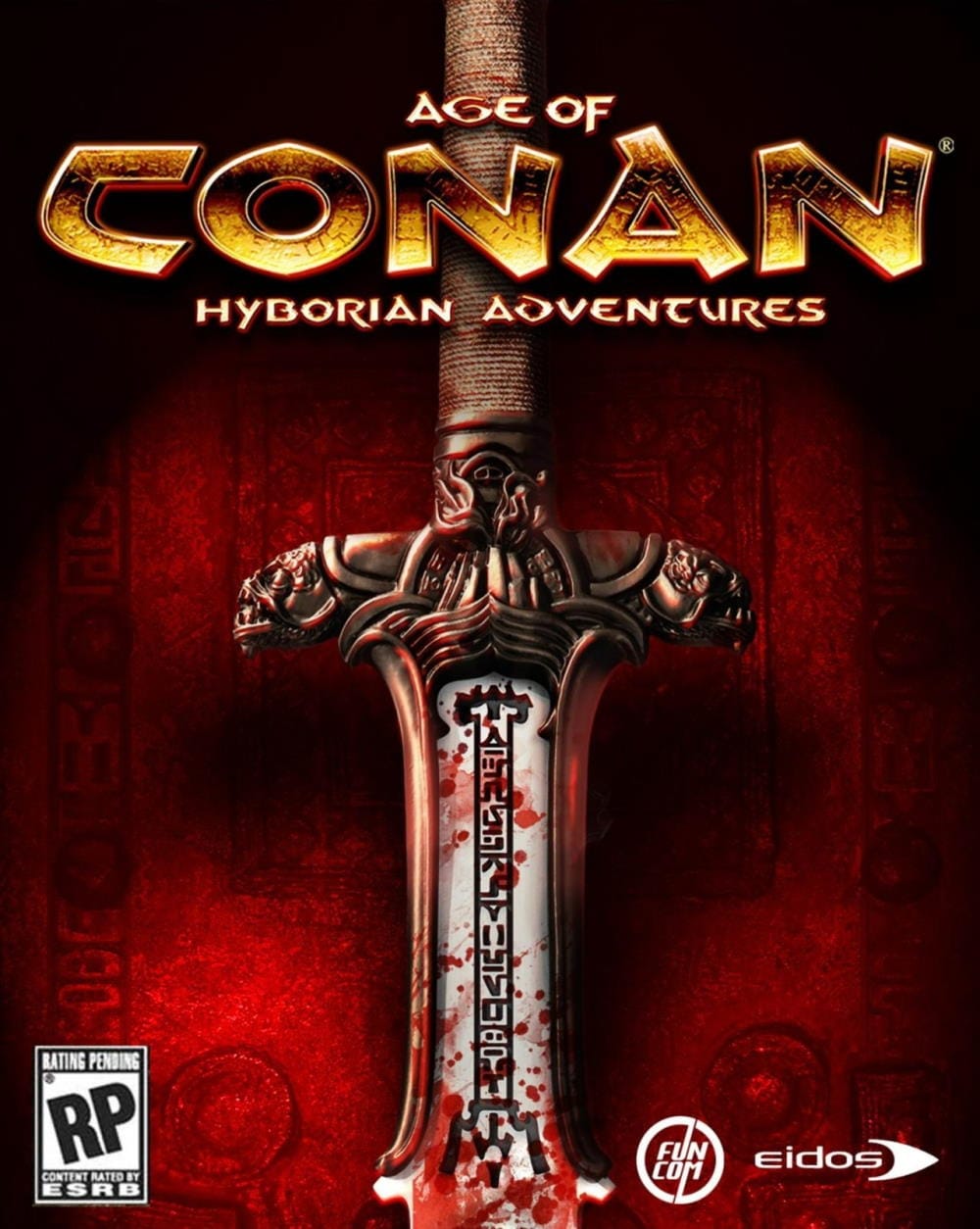Chapter 2: Blood, Sand and Hype
How Funcom parlayed Anarchy Online’s disaster into an even bigger mess :3
The Hyborian Hype Machine
Fresh off the Anarchy Online roller-coaster, Funcom doubled-down on ambition with Age of Conan: Hyborian Adventures. Announced in the mid-2000s, it was the studio’s first heavyweight licensed IP, banking on Robert E. Howard’s barbarian to lure a mainstream crowd 1. Marketing promised—loudly—“visceral real-time combat,” an R-rated narrative, and a living open world that would “re-define MMORPGs” 14. Trailers flaunted savage duels and sweeping vistas, and community hype exploded: guild forums, live dev chats, and 500,000+ beta sign-ups by early 2008 15 16 11. Expectations? Through the stratosphere. What could possibly go wrong? LOLOLOL
Despite shipping 1.4 million boxes in May 2008, Hyboria face-planted almost immediately 18.
- Day-one bugs and server meltdowns turned the “savage frontier” into a crash-to-desktop simulator.
- The “revolutionary” combo combat felt fresh for ten hours, clunky forever after.
- Endgame content? Sparse and grind-heavy—players hit cap and found a yawning content desert.
By January 2009 Funcom merged 49 servers into 18 as populations cratered 6. Reviewers who’d drooled over launch builds were now writing post-mortems. So much for re-defining the genre—Funcom had merely re-defined failure. LMAOOO

actually skipped this one, I hate medieval settings :3
More Ambition, More Problems
Funcom’s pre-launch vision was bigger than just blood-and-steel combat. The studio hyped living cities, territory warfare, and a political system where guilds would battle for scarce resources. Early beta impressions were promising: a mature tone, strong visuals, and a departure from cookie-cutter fantasy MMOs. But that ambition carried a brutal cost.
Server crashes, quest bugs, and rubber-band combat plagued launch month. Exploration was gorgeous yet empty; key zones shipped half-finished or missing promised NPC interactions. Crafting felt tacked on, while PvP balance swung wildly thanks to under-tested gear scaling.
Internally, Funcom was drowning. Leadership shuffled priorities—fix launch crises or build the first content expansion? Development whiplash led to rushed patches that broke as much as they fixed. Shareholder pressure piled on when sales flat-lined. Morale tanked; community sentiment boiled over on forums and early social media.
The Gameplay Reality: Reception and Expansion Struggles
Early reviews hovered around 80/100, applauding atmosphere and melee ideas, yet flagged repetitive quests and a hollow endgame 5 10 [19]. Later paid updates—like the bug-ridden Vanaheim pack—felt rushed, sparking forum riots over quality and value 20. PvP imbalances and scarce high-level dungeons deepened fatigue. Passionate fans alternated between defending the IP and demanding accountability, but Funcom never closed the gap between promise and reality. Those unresolved frustrations poisoned word-of-mouth and primed the market to greet future Funcom projects—Dune: Awakening included—with deep skepticism.
The Dark Undercurrent: Player Trust and Monetization Shift
Beyond headline bugs, Age of Conan bled out because Funcom squandered goodwill. Promised expansions slipped, while long-standing combat issues lingered. Rather than rebuild credibility, Funcom doubled down on quick-cash tactics: micro-transactions, convenience buffs, and cosmetic packs that felt predatory to a shrinking core audience 10. Forums turned into warzones of sarcasm and disappointment. That trust breach triggered an exodus months before ordinary MMO fatigue would have hit. By the time Hyboria limped into free-to-play, many players had sworn off future Funcom launches—a reputational wound that reopened when Dune: Awakening repeated the cycle.
The Desperate Pivot
May 2011: the white flag. Funcom rebranded to Age of Conan: Unchained and embraced free-to-play 10. Marketing framed the pivot as “liberating Hyboria,” but veterans decoded the euphemism: a cash-shop lifeboat. Server merges and promo weekends produced brief spikes, then numbers cratered again as Guild Wars 2, SWTOR, and WoW expansions offered polished refuge.
Lessons Not Learned
Did Funcom course-correct? LMAOOO nope. They perfected a four-step loop:
- Snag a flashy IP.
- Promise genre-shaking innovation.
- Ship half-baked code and watch players bail.
- Pivot to F2P cosmetics while execs play musical chairs.
Sound familiar, Dune: Awakening fans? Hyboria was just the rehearsal. Funcom proved it could hype a game into existence—and just as quickly drive it off a cliff.
Next up: Chapter 3: The MMO That Trolled Itseld tackles The Secret World—monthly-update vows, two-year content drought, and Funcom’s uncanny talent for relaunching the same game twice with extra monetization LMAOOOOO